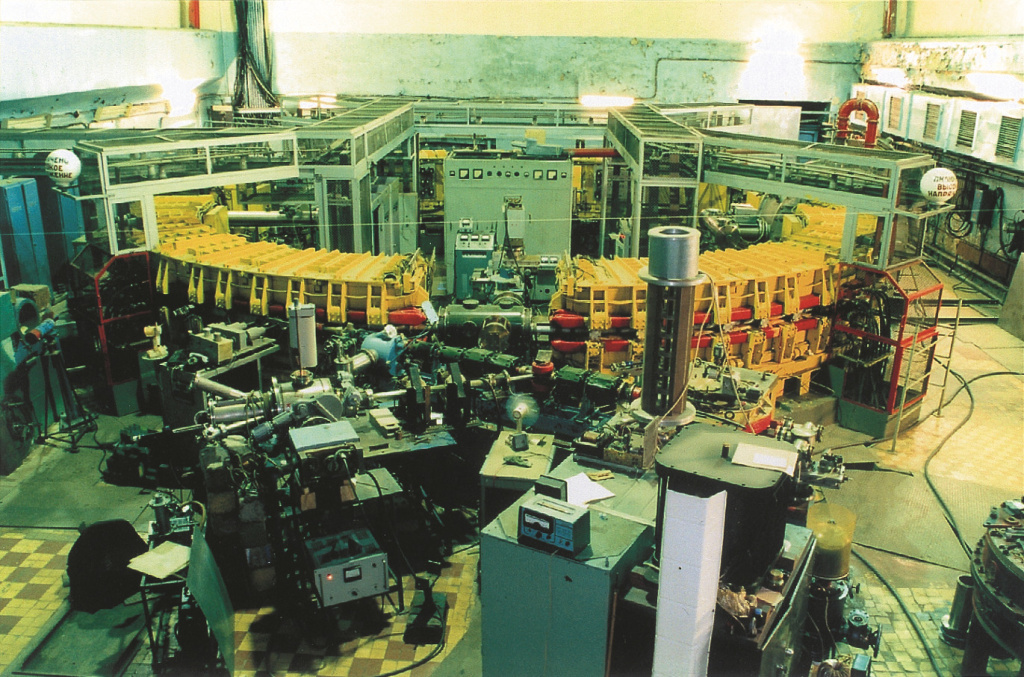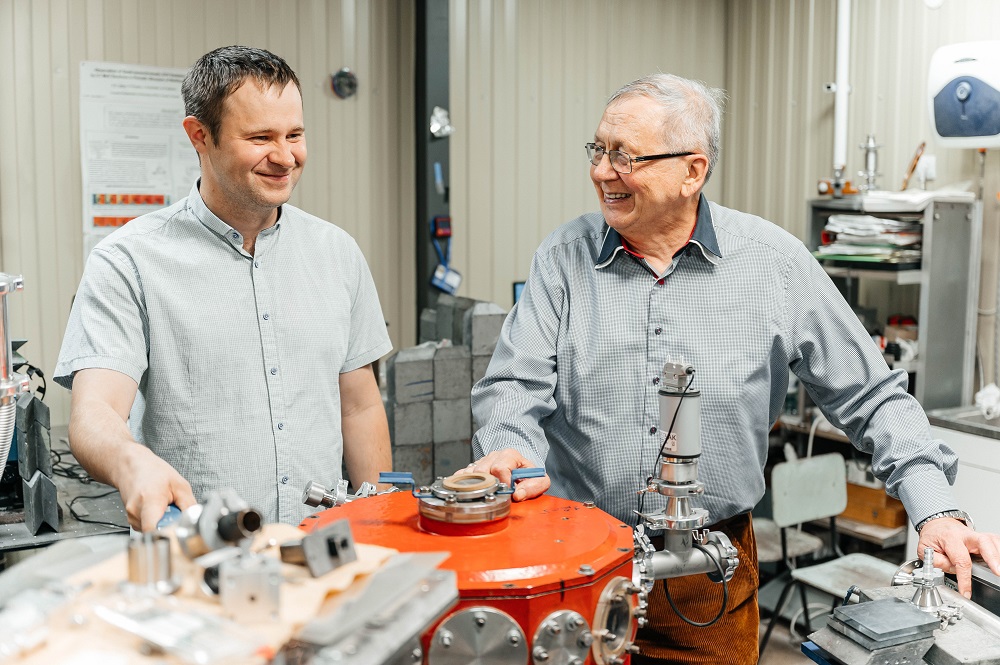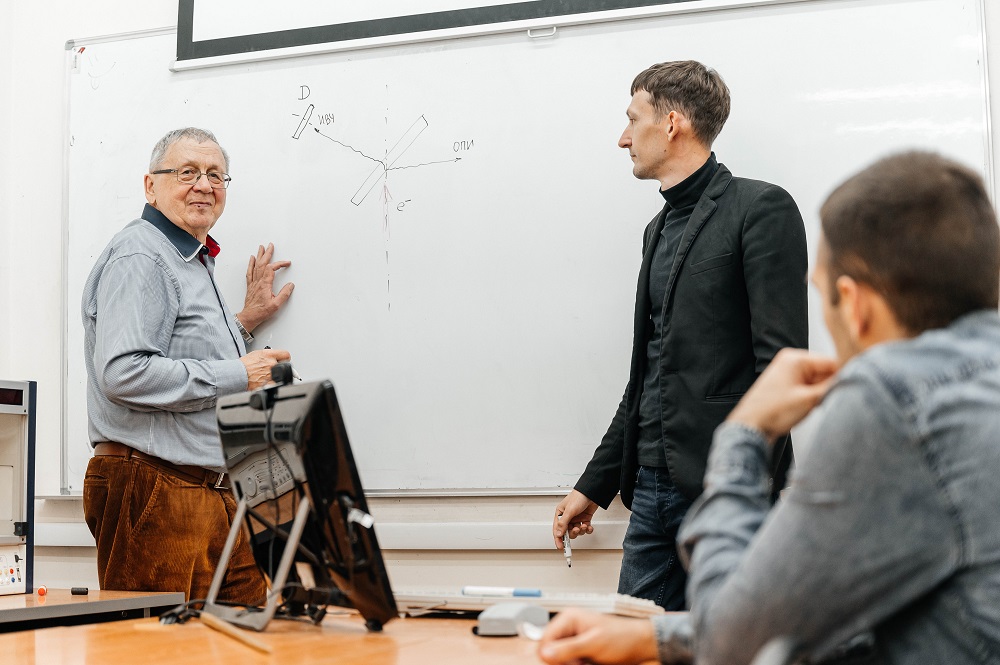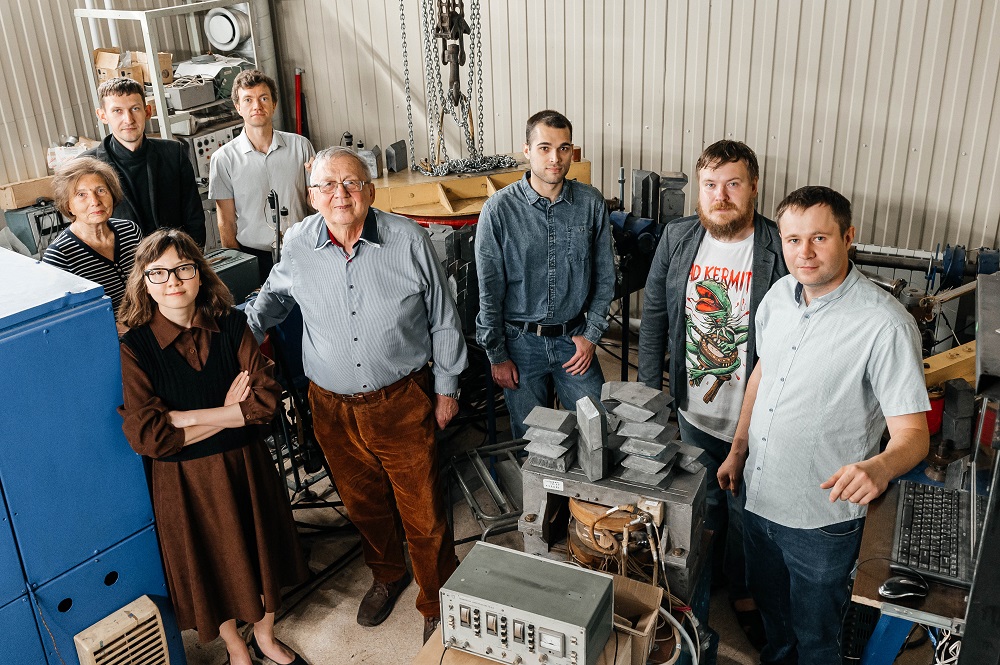Other materials about faculty and scientists of Tomsk Polytechnic University:
MEETING CURRENT CHALLENGES
The team of Professor Potylitsyn pooled together to conduct research into the physics of radiation processes based on electron beams at the Sirius synchrotron. This ring electron accelerator at Tomsk Polytech was one of the ten largest synchrotrons in the world in the 60s-70s of the past century. It was used for a large scope of fundamental research on the physics of charged particle acceleration, nucleus and elementary particles.
"Back then, Alexander Vorobyov, rector of the institute, as a physicist himself had a clear vision of the trend in modern physics and realized the importance of creating an accelerator of this class at the institute. He initiated research on the physics of radiation processes based on high-energy electron beams at our synchrotron. At that time, it seemed nonsense to many physicists, because it was believed that only low-energy electrons were suitable for studying radiation effects in crystalline targets. Apparently, judging by the stir that our research findings created in the late 1970s, Vorobyov was totally right," says Alexander Potylitsyn, team leader and consulting professor at the Research School of High-Energy Physics of Tomsk Polytechnic University. From 1980 to 1995, he worked as head of Laboratory No. 11 at the Research Institute of Nuclear Physics, engaged in research at the synchrotron.
In the mid-60s of the last century, the Sirius research program included the creation of a polarized high-energy gamma-ray photons beam using a diamond target for experiments in elementary particle physics.Valentina Tereshkova Diamond:
To create a polarized gamma ray beam at the Sirius synchrotron, the rector of TPI (now TPU), Alexander Vorobyov, forwarded a request from the Ministry of Education to the Ministry of Finance to allocate a natural diamond crystal to the university from the State Repository for Precious Metals. The request was approved and the university was granted a Valentina Tereshkova jewelry diamond. The diamond was used to cut out a diamond target of the finest quality, which is unachievable even with modern cultivation technologies. This diamond target helped to obtain a polarized beam and was used in a great number of experiments, which laid the foundation for new theoretical models.
Originally, the diamond was completely clear. However, it turned black as a result of a long-term exposure to the electron beam in experiments. It happened due to radiation deformation of the diamond crystal lattice.
After decommissioning of the synchrotron, the diamond target will be used in ion beam experiments at the NICA collider (Dubna). The remaining parts of the original crystal of more than 25 carats will be exhibited at the TPU Museum of History.

Among the results achieved by the team are, for example, radiation detection by axial channeling, detection of parametric X-ray radiation, the first record of optical diffraction radiation, and studies of diffracted Cherenkov radiation. All these results are regularly cited in scientific publications worldwide.
When Sirius was decommissioned, the team continued its research at the Microtron accelerator.
FROM NICA TO SKIFF
Today the team consists of five researchers and a postgraduate student. As members of the international FLAP collaboration (Fundamental & applied Linear Accelerator Physics collaboration), they are engaged in research in the field of fundamental and applied linear accelerator physics. In this framework, for example, the team has developed a precision diagnostic method for accelerator electron beams. It was tested experimentally at the LINAC-200 accelerator in Dubna.
In addition, the researchers from Tomsk Polytechnic University together with the Joint Institute for Nuclear Research are currently preparing an experiment at the NICA collider with the Nuclotron extracted beam. For this experiment, the researchers have developed a system of ion beam diagnostics in a vacuum chamber, which makes it possible to measure the transverse size of an accelerated ion beam by its Cherenkov radiation in a diamond target. The system will ensure high precision experiments at the collider, including those aiming to study a new matter that does not exist in nature.Our colleagues from St. Petersburg called what we did "high energy crystal optics", because all research at that time was based on crystals. I believe that this term is too narrow. After all, our research interests include not only crystal optics, but also new types of radiation in artificial periodic structures. We have been working on it for more than 40 years,

"Now we are also joining the Siberian Ring Photon Source (SKIF) project in part of equipment and research technologies," the scientist adds.
"THE TEAM IS A CONSTANT VARIABLE"
The team has become a launching pad for many researchers who are currently working in research centers across the globe.
"Our team is a constant variable. Many of those who embarked upon their research careers within our team are now working all over the world. I see nothing supernatural in this fact. I keep telling our postgraduate students that the most important factors are motivation, persistence, and erudition. If I see the spark in the eyes of a young researcher and aspiration to solve a scientific challenge effectively and efficiently, I help in every possible way, trying to guide him/her towards a clear vision of the ultimate goal. I believe it is important to minimize the time spent on frivolous research," says the professor.
Did You Know:
Among the alumni of Alexander Potylitsyn's research team are Leonid Sukhikh, acting rector of Tomsk Polytechnic University, and Alexander Wagner, rector of South Ural State University. Moreover, many research team leaders have previously worked under his supervision, namely, Professor Igor Vnukov, department chair at Belgorod University, Dr. Dmitry Karlovets, head of a laboratory at ITMO, Professor Pavel Karataev, lecturer at Royal Holloway College (London), and Professor Alexander Aryshev, head of a department at the KEK National Accelerator Center (Japan).

